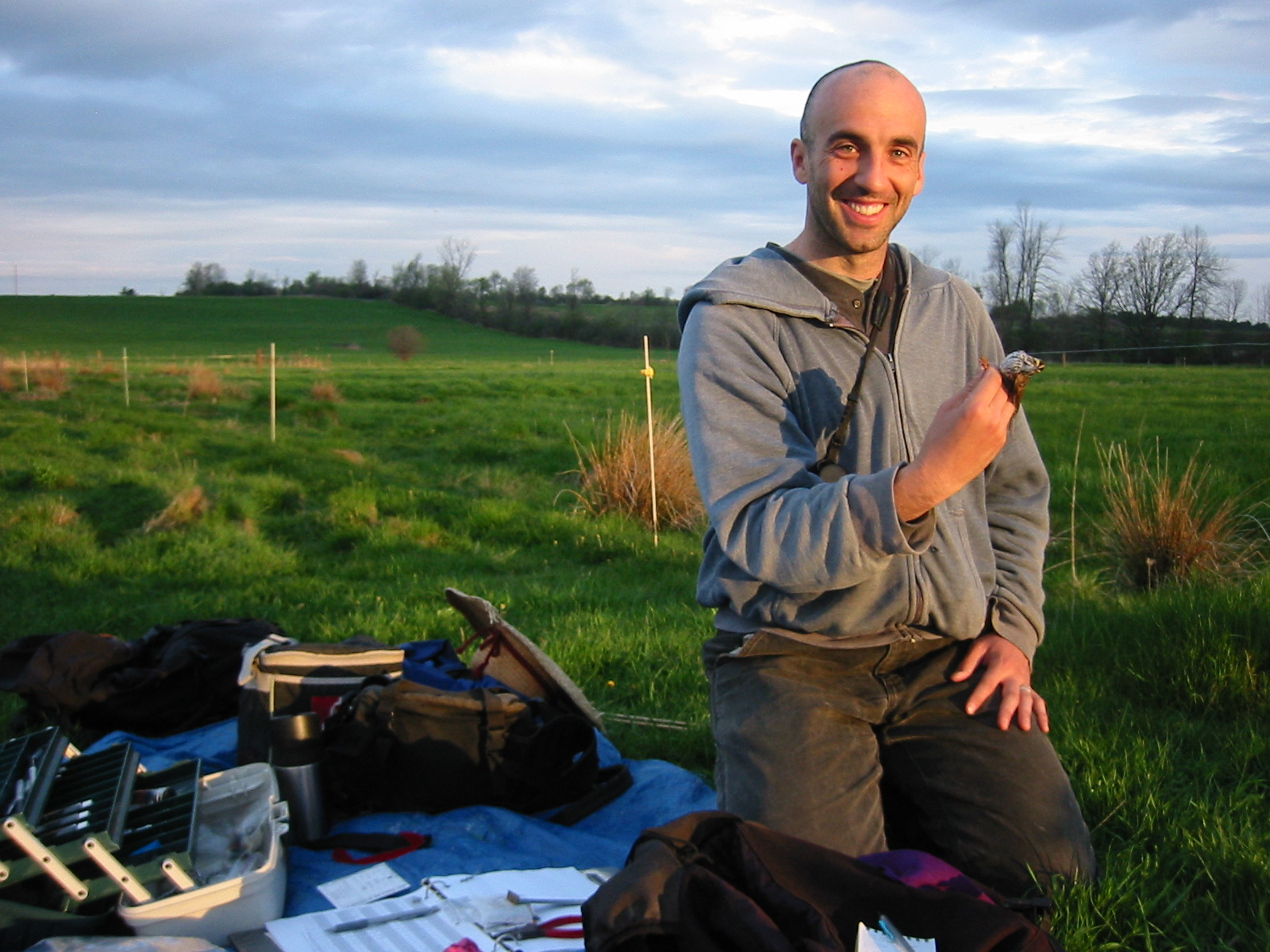Vermont Project
Grassland Population Viability in the Champlain Valley
January 2002 - December 2009
Personnel
Participating Agencies
- USDA - NRCS
- USDA
- U.S. Dept of Agriculture

Over the last 40 years North American grassland bird populations have declined more than any other bird guild. This trend is especially evident in Vermont, where species experiencing precipitous declines include the Savannah Sparrow (Passerculus sandwichensis) and Bobolink (Dolichonyx oryzivorus). These declines are linked to habitat loss due to reforestation and suburbanization, as well as the intensification of grassland management. Modern grassland management includes earlier first-haying dates (late-May) and shorter intervals between haying events (35 days). These management practices have severe repercussions for songbird populations because 1) early-haying results in complete nest failure (99% Savannah Sparrow and 100% Bobolink nests) , 2) the interval between the first and second haying is too short for birds to renest, and 3) intensively managed fields comprise a significant portion of the total available habitat for nesting birds (as much as 40%). In 2002-2006, we examined how hayfield and pasture management affected grassland songbird ecological and evolutionary behavior in the agricultural landscape of the Champlain Valley, Vermont and New York. Our collaborators include Allan Strong and Austin Troy from the University of Vermont, and Neil Buckley from Plattsburg State University. We studied songbirds in four grassland management types: early-hayed fields harvested in late-May or early-June and again in mid-July; middle-hayed fields harvested in late-June or early-July; late-hayed fields harvested after 1 August; rotationally-grazed pastures, a matrix of small paddocks where cows are moved after the grass in a paddock is eaten to a low point. We addressed the following objectives: 1. Determine the annual productivity, survival, and recruitment of Bobolinks and Savannah Sparrows in the four treatment types. 2. Identify the effects of early-haying on the social and genetic mating systems of Savannah Sparrows. 3. Conduct a population viability analysis for Bobolinks and Savannah Sparrows nesting in the Champlain Valley, assessing sensitivities of life-history parameters and identifying effective management alternatives. This study provides information on how agricultural management affects the ecology, evolution, and viability of grassland birds. It will help inform landowners, managers, and law-makers about management practices and habitat requirements needed to sustain populations. Check out our publications by clicking on a link below.
| Research Publications | Publication Date |
|---|---|
| Perlut, N., C. Freeman-Gallant, A. M. Strong, T. M. Donovan, C. W. Kilpatrick, and N. J. Zalik. 2008. Agricultural management affects evolutionary processes in a migratory songbird. Molecular Ecology 17:1248-1255. | Abstract | Download | Publisher Website | February 2008 |
| Perlut, N., A. Strong, T. M. Donovan, and N. Buckley. 2006. Grassland songbirds in a dynamic management landscape: behavioral responses and management strategies. Ecological Applications 16:2235-2247. | Download | December 2006 |
| Perlut, N. G., A. M. Strong, T. M. Donovan, and N. J. Buckley. 2008. Regional population viability of grassland songbirds: effects of agricultural management. Biological Conservation 141:3139-3151. | Abstract | Download | Publisher Website | December 2008 |
| Perlut, N. G., A. M. Strong, T. M. Donovan, and N. J. Buckley. 2008. Grassland songbird survival and recruitment in heterogeneous agricultural landscapes: implications for source-sink demography. Ecology 89:1941-1952. | Abstract | Download | Publisher Website | July 2008 |
